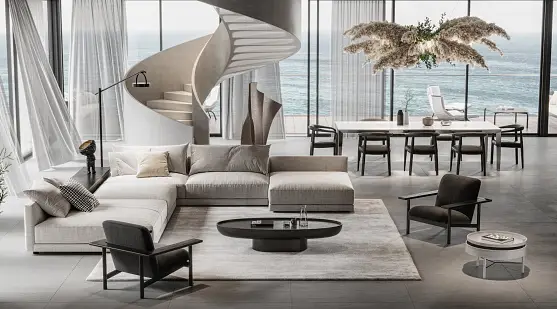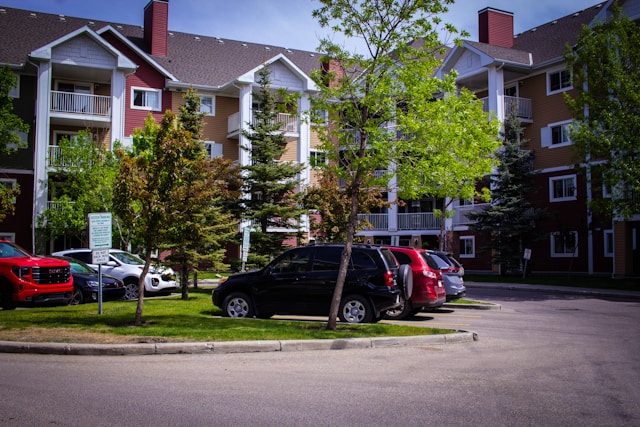A furnished property refers to a rental unit or property that comes with furniture and essential amenities, making it ready for immediate occupancy. Furnished properties typically include items such as beds, sofas, tables, chairs, appliances (such as a refrigerator, stove, and washer/dryer), and basic household items like kitchenware, linens, and curtains.
The level of furnishing can vary, ranging from fully furnished units with complete sets of furniture and appliances to partially furnished units with essential items only. The specific items provided in a furnished property may depend on the landlord’s offerings, the rental agreement, and the target market.
Furnished properties are often sought after by tenants who prefer convenience and flexibility. They are commonly used for short-term stays, temporary housing needs, or situations where tenants do not want to invest in purchasing furniture or dealing with the logistics of furnishing a property.
Furnished rentals are popular among professionals relocating for work, international visitors, students, or individuals going through transitional periods, such as home renovations or corporate relocations.
It’s important for both landlords and tenants to clearly define the level of furnishings and expectations in the rental agreement to avoid any misunderstandings. Landlords should consider the wear and tear on the furniture and appliances and include clauses to address the maintenance, replacement, or damages to the provided furnishings.
Furnished rentals offer several benefits for both landlords and tenants. Here are some advantages of offering furnished rentals:
Benefits for Landlords:
- Higher Rental Income: Furnished rentals generally command higher rental rates compared to unfurnished properties. The inclusion of furniture and amenities allows landlords to charge a premium for the convenience and added value provided.
- Attracting a Wider Tenant Pool: Furnished rentals appeal to various types of tenants, including professionals relocating for work, students, international visitors, or individuals in need of temporary housing. By offering a furnished option, landlords can attract a broader range of potential tenants, increasing the chances of securing tenants quickly.
- Shorter Vacancy Periods: Furnished rentals often have shorter vacancy periods since they cater to tenants seeking immediate occupancy. Many tenants prefer furnished properties as they eliminate the need to purchase or transport furniture, making them more likely to choose a furnished rental over an unfurnished one.
- Reduced Wear and Tear: Furnished rentals typically experience less wear and tear on the property itself. Since the landlord owns and maintains the furniture and appliances, tenants are less likely to cause damage or neglect maintenance issues.
- Convenience in Property Management: Furnished rentals can simplify property management. Landlords can oversee the maintenance and replacement of furniture and appliances, ensuring that the property remains in good condition. Additionally, periodic inspections can be conducted to assess the condition of the furnishings.
Benefits for Tenants:
- Convenience and Cost Savings: Tenants can enjoy the convenience of moving into a fully furnished rental without the need to purchase and transport furniture. This is particularly beneficial for individuals who are new to an area, have temporary housing needs, or prefer a hassle-free living arrangement. They can save money on upfront furniture costs and the hassle of selling or storing furniture when they move out.
- Flexibility: Furnished rentals offer flexibility in terms of lease duration. Tenants who require short-term accommodations or are uncertain about their long-term plans can find furnished rentals more suitable. They have the flexibility to move in and out without the commitment of long-term leases or the burden of furnishing and unfurnishing the space.
- Time-saving: Renting a furnished property saves tenants the time and effort of shopping for furniture, coordinating deliveries, and setting up the living space. They can immediately settle into a comfortable and functional home without the logistical challenges of furnishing an unfurnished rental.
- Mobility: Furnished rentals are ideal for tenants who frequently relocate due to work or personal reasons. They can easily move from one furnished rental to another without the burden of transporting furniture, making the transition smoother and more convenient.
- Temporary Housing Solutions: Furnished rentals are often sought after by individuals in need of temporary housing, such as those undergoing home renovations, corporate relocations, or medical treatments. Furnished rentals provide a comfortable living space during transitional periods, offering a home-like environment without the long-term commitment.
It’s important for landlords and tenants to consider the specific needs and preferences of their target market when deciding whether to offer or rent a furnished property.
While furnished rental properties offer several benefits, there are also some potential disadvantages to consider. Here are a few drawbacks associated with furnished rental properties:
- Higher Upfront Costs for Landlords: Furnishing a rental property can be a significant investment for landlords. Purchasing quality furniture, appliances, and other necessary items can be costly, especially if they need to be replaced or upgraded periodically. The initial expense of furnishing the property may require a larger upfront investment compared to offering an unfurnished rental.
- Increased Maintenance and Replacement: Furnished rentals may require more frequent property maintenance and replacement of furniture and appliances due to wear and tear. Tenants may not treat the furnishings with the same level of care as they would their own belongings, resulting in a higher likelihood of damage or accelerated depreciation of the provided items. Regular inspections and maintenance may be necessary to keep the furnishings in good condition.
- Limited Tenant Pool: While furnished rentals can attract a wider range of potential tenants, they may also limit the tenant pool. Some individuals may already own their furniture or prefer to choose their own style and decor, and therefore may be less inclined to rent a furnished property. By offering only furnished rentals, landlords may miss out on potential tenants who specifically seek unfurnished options.
- Style and Personal Preferences: Furnished properties often come with a predefined style and decor chosen by the landlord. This may not align with the personal preferences and tastes of potential tenants. Some tenants may be hesitant to rent a furnished property if they do not find the furnishings aesthetically appealing or if they prefer to customize the space to their own liking.
- Limited Flexibility for Tenants: Furnished rentals may offer less flexibility for tenants who have their own furniture or prefer an unfurnished space. These tenants may be discouraged from renting a furnished property due to the limitations on personalization and the need to store their own furniture during the rental period.
- Increased Risks of Damages: While some tenants will take good care of the furnished property, others may not be as cautious, leading to potential damages. Repairing or replacing damaged furniture or appliances can be costly and time-consuming for landlords, potentially affecting rental income during the repair or replacement process.
Landlords should carefully weigh the advantages and disadvantages of offering furnished rentals, considering factors such as the target market, location, and overall rental market conditions.
Conducting thorough market research and assessing the potential risks and rewards can help landlords make informed decisions about whether to offer furnished or unfurnished rental properties.





